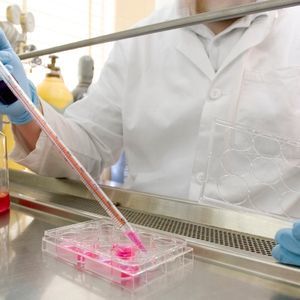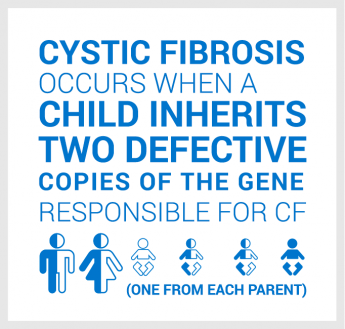Research into gene and stem cell therapies are of great interest to Cystic Fibrosis Canada as this is top health priority of our Canadian cystic fibrosis (CF) community.
Genetic therapies may ‘correct’ any genetic defect in the CFTR gene of people with cystic fibrosis or provide people with the disease an additional copy of the gene that is not defective. Stem cell-based therapies introduce healthy cells (usually cells taken from that person and genetically corrected in a lab to have a normal CF gene) into the body, for example, into the lung, to help achieve normal lung function. These methods hold promise of a treatment or cure for all people with CF, regardless of mutation. However there remain many barriers to developing these concepts and laboratory techniques into viable treatments for people living with CF.
One barrier for stem cell-based methods is the cost and challenge of generating stem cells from each person with cystic fibrosis and correcting the CF gene mutation in each. It would be far easier and with better quality control to be able to introduce the same stem cells with normal CF gene into many people with CF. Under typical circumstances this can’t happen because stem cells from one person would result in an immune response to eliminate the cells in another, just as transplant patients can experience organ rejection.
Dr. Thomas Waddell, a senior scientist and thoracic surgeon (lung transplantation doctor) at the University Health Network in Toronto, is looking to tackle this challenge. Dr. Waddell is receiving funding from Cystic Fibrosis Canada from 2022-2025 for his research study, The use of immune-modified pluripotent safe cells in cell replacement therapy for Cystic Fibrosis.
Dr. Waddell and his team have proposed an alternative approach to lung transplantation in end stage CF lung disease, which can have many associated complications and risks such as infection and rejection.
Dr. Waddell is attempting to generate ‘designer cells’ or stem cells that are modified so that they are no longer recognized by the body as foreign and result in rejection. The team is introducing certain changes in the cell that make the cells both immunotolerant and also have a safety switch so that their growth can be closely controlled to make them safe for introduction into the lung. If successful, one universal donor ‘designer cell’ could be used for many CF patients with different mutations because these cells would all have the normal CFTR gene.
Designer cell introduction into the CF lung would be less invasive and risky than a lung transplantation and may have many of the benefits such as improved lung function over time. Dr. Waddell’s team will start with introduction of the designer cells into small animal lungs. If the team can show that cell introduction results in improved in CFTR function and increased resistance to lung infection, the work can be translated to a pre-clinical lung perfusion platform.
This system is used to keep the removed lungs after lung transplantation of a CF patient alive and functional for study for several hours after surgical removal. If successful in that model, a future step would be to learn how the designer cells perform by introduction into the lungs of people in a clinical trial. However, before the research can get to that point, many other aspects of this technology would first have to be worked out and studied closely to ensure safety for those involved. Dr. Waddell’s Cystic Fibrosis Canada funded research has the potential for a significant impact on cell-based therapeutic strategies to treat the lung and could also be adapted to other organ systems such as the pancreas, or other CF-affected tissues.





